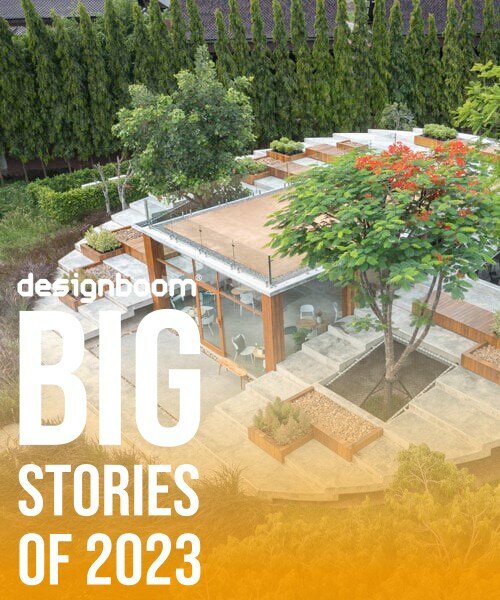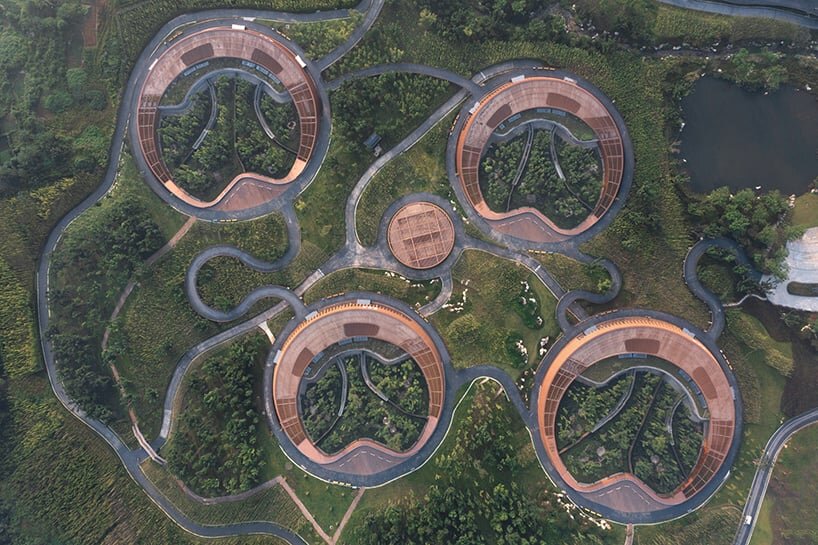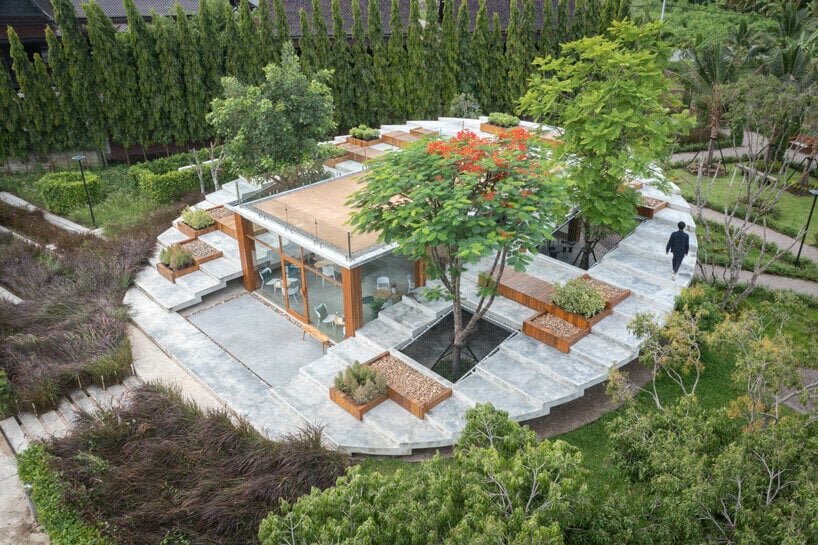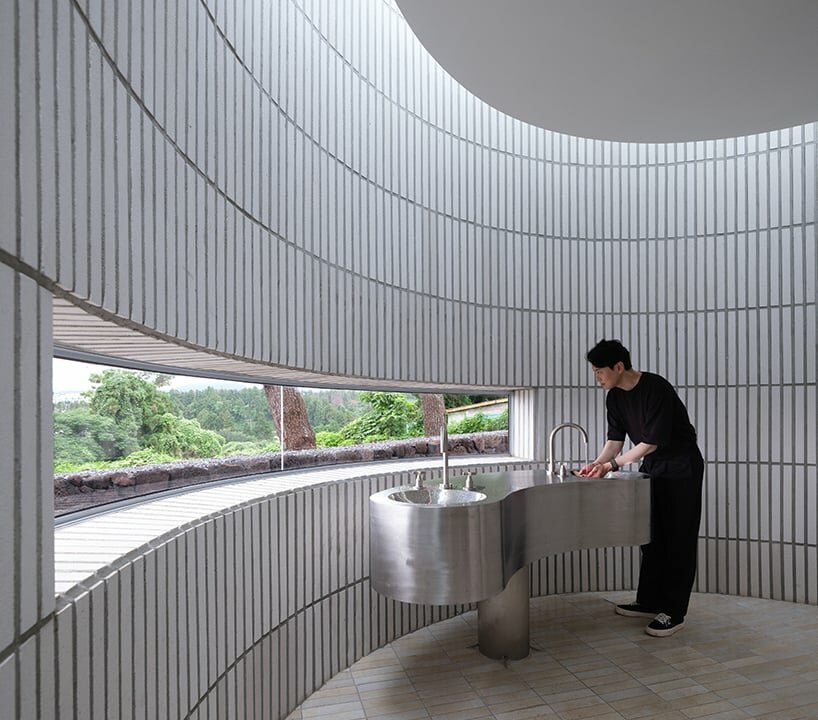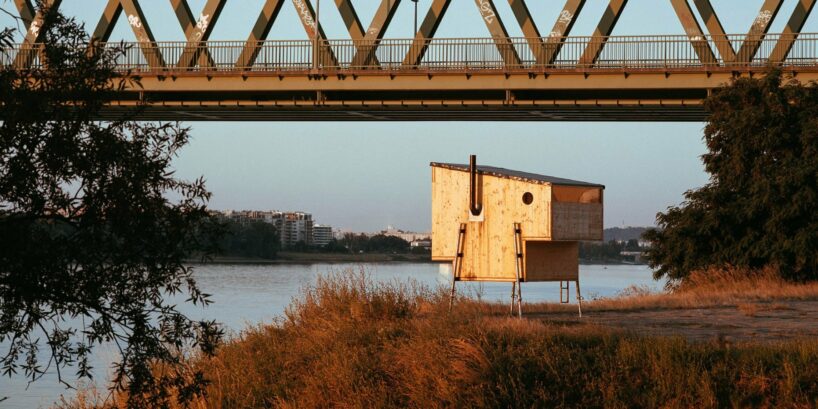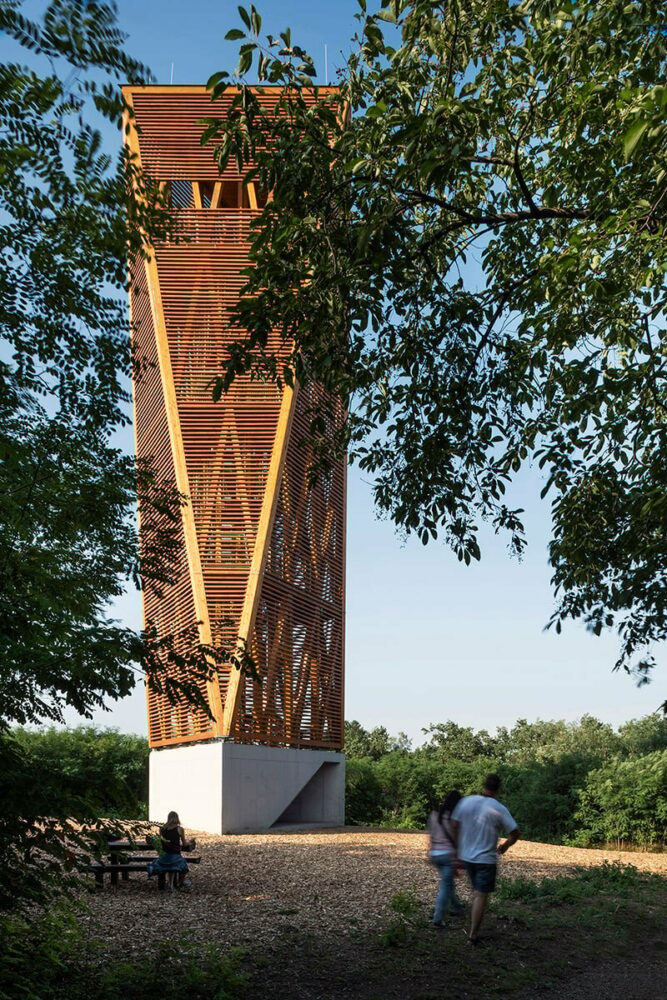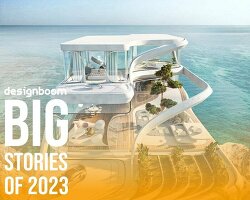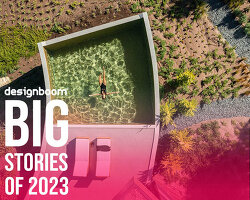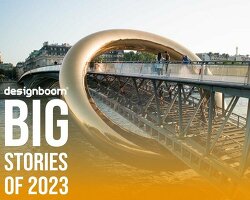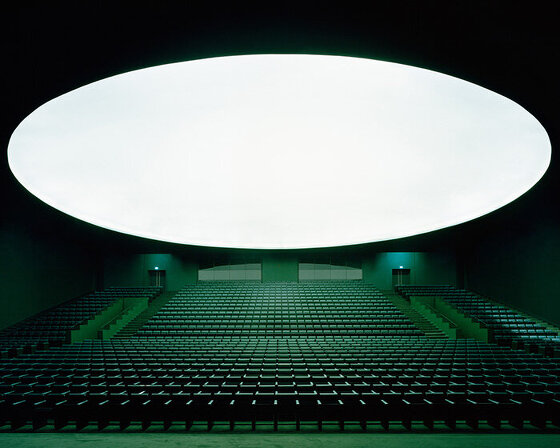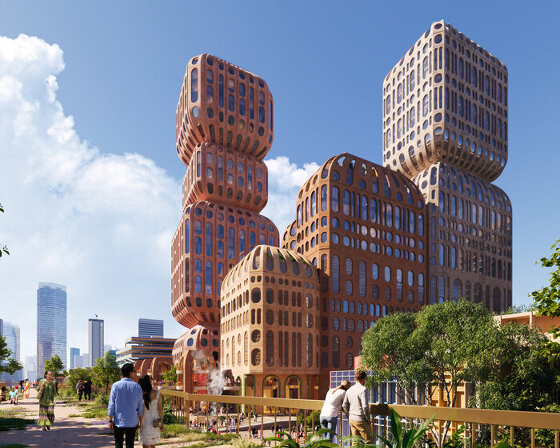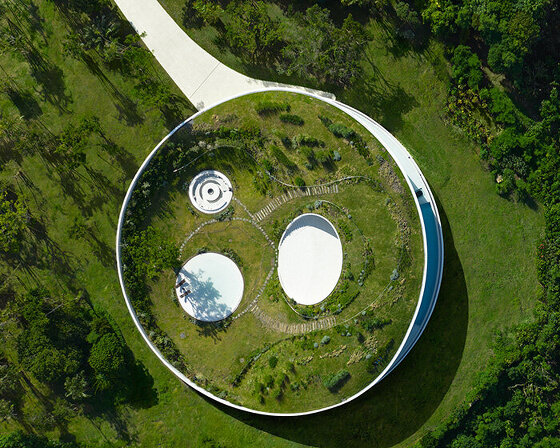designboom’s top 10 picks of public spaces from 2023
In 2023, architects and interior designers across the world continued to introduce diverse public spaces that seek to enhance the urban fabric and bring communities together. designboom’s reader submissions of the year have seen both intimate spatial experiences and grand architectural schemes. EID’s campus expansion in Chengdu nestles into its natural context as a cross-disciplinary center for education and recreation, while ARB Architects’ museum in a village near Hanoi pays homage to the region’s cultural heritage and history. For quieter and more serene moments in the open, Looklen Architects created a circular cafe shrouded in greenery in Thailand, and Wiki World gave home to a cluster of monolithic cabins along the Fragrant Lake of Huanggang City in China. As we continue our roundup of BIG STORIES, read on to discover more of our TOP 10 picks of public spaces created by our readers.
EID ARCHITECTURE’S RING-SHAPED ‘PANDA PAVILIONS’ EXPAND CHENGDU RESEARCH CENTER
EID Architecture completes the project of Panda Pavilions, a significant campus expansion in a national preservation park near the outskirts of Chengdu, China. Chengdu National Giant Panda Research and Breeding Center holds the world’s leading research institute on panda preservation and now hosts a group of four panda pavilions designed by Ping Jiang, newly opened to the public. The pavilions set up the research lab for the study of pandas’ behaviors and activities. Devoted to fostering a cross-disciplinary collaboration as a care center for the giant pandas, the structures, also, serve the community for educational and recreational purposes attracting millions of panda enthusiasts annually to visit the campus.
The design is organized around four open-air circular courtyards which serve as an outdoor playground for the bears while providing a continuous connection with nature. Aimed at educating, entertaining, and inspiring a diverse audience from around China and across the world, the panda pavilions bring a unique cultural experience blending science, education, art, and entertainment.
read more here
CORTEN STEEL AND STONE COMPONENTS REVAMP COLLAPSED OPEN WASHHOUSE IN ITALY
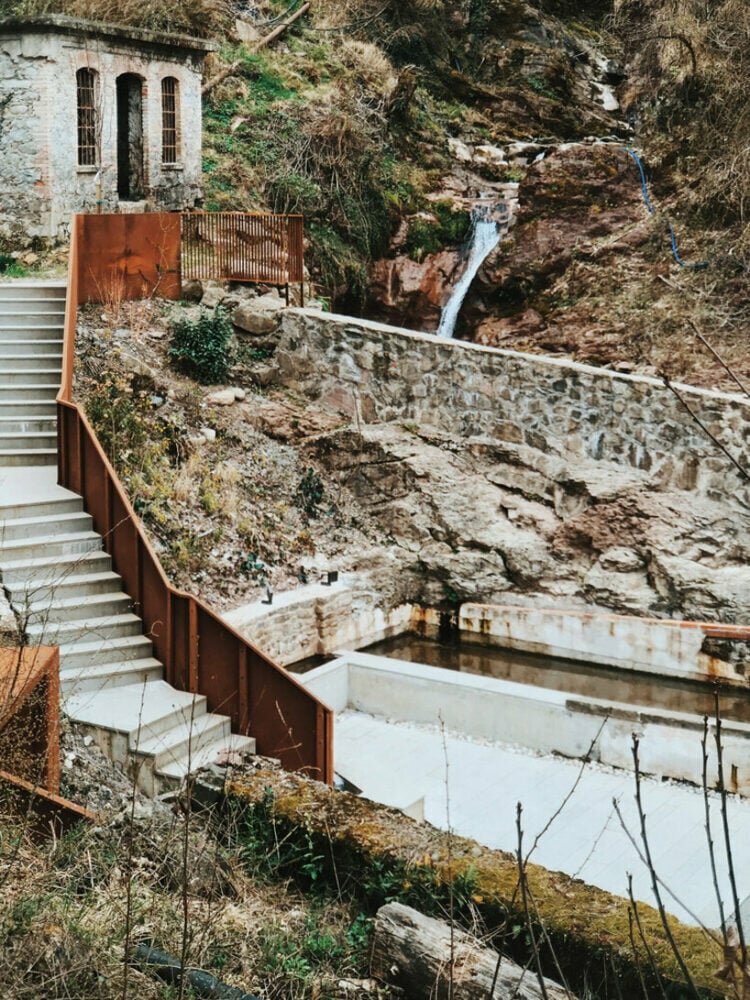
image by Gianluca Panichi, Dimitri Magnanini, Giulia Amadei
The project by Architetto Gianluca Panichi involves the reconfiguration of a building complex in need of restoration following the disastrous flood of 2011 in Mulazzo, Italy. Initial safety measures are implemented in the structure comprising a fountain, a covered washhouse, and a flight of steps connecting to the adjacent public park. Rather than pursuing a faithful reconstruction of the lost volumes, the development focuses on a balanced and respectful functional recovery, integrating the missing elements while reviving the site by harmonizing with its historical context. By crafting new structures and integrations made of ‘minimal’ materials such as concrete, corten steel, and stone, the project seamlessly merges the built volumes with a broader system of paths and equipped green areas.
read more here
ARCHES, CURVES AND ROUNDED EDGES CONTOUR PARCONIDO BAKERY CAFE IN SOUTH KOREA
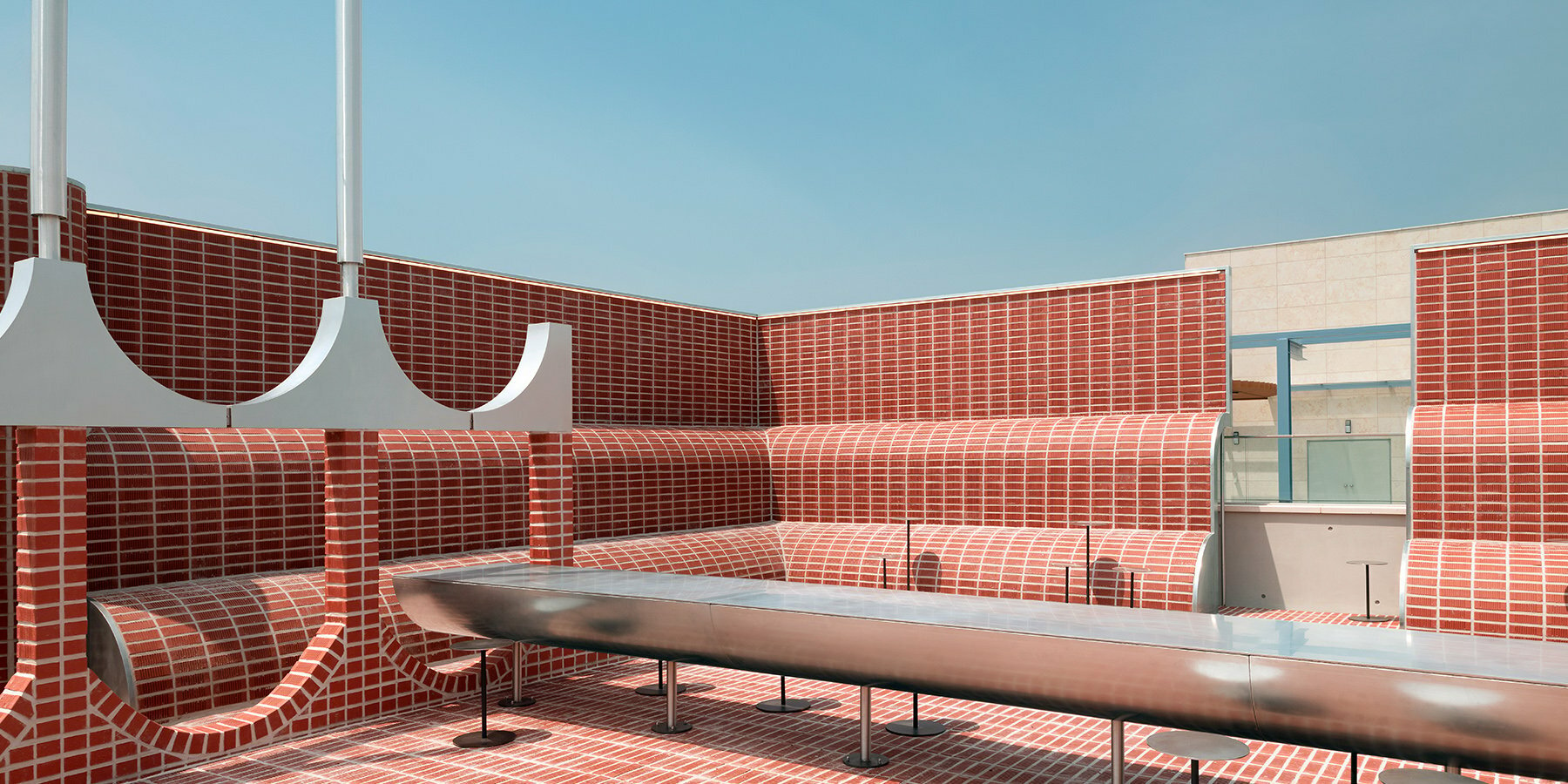
image by Hong Seokgyu
Design practice sukchulmok constructs ‘parconido’ bakery cafe in northern Gyeonggi-do, South Korea, utilizing subtle contemporary materials and shaping simple rounded forms. The cafe presents a consistent space in which forms, furniture, and lighting are designed to create a unified atmosphere. The project draws from ‘European’ architectural elements applying red brick in combination with stainless steel.
The structure develops in layers ‘stuck one by one’ with columns that surge everywhere and rounded walls wrapping the open layout. Although the walls and columns compose different shapes, they all present a radius of 600 mm. Following this design rule that acts as a reference point throughout the construction, the project generates a sense of unity while still avoiding monotony. The contemporary café is built out of stacked clay bricks with no holes, that are cut off by two-thirds of the thickness and form a coating skin on an iron frame to relieve the load.
read more here
CIRCULAR STEPPED CONCRETE VOLUME FRAMES POMELO AMPHAWA CAFÉ IN THAILAND
Bangkok-based studio Looklen Architects designs a circular café on the riverside of Amphwa, Thailand, as part of The Pomelo Amphawa master plan composed of five buildings that are integrated into the crops and greenery on the site. Situated in the lychee garden, the café is oriented toward the Mekong River on the North, an ideal direction to protect the structure from the strong sunlight and climate of the tropical region. The design explores the relationship between geometric architecture and nature. A rectangular glazed space is embraced by a concrete circular amphitheater. The building develops an open layout approachable from all directions taking advantage of the surrounding landscape.
read more here
CERAMIC TILES COAT THE ROUNDED FORM OF JUNGMUN CATHOLIC CHURCH UNIT IN SOUTH KOREA
Studio Heech and Oh Architects design Four Three House to provide Jungmun Catholic Church in Jeju with offices, a holy gift shop, an archive, and toilets for the church community and pilgrims. the building also commemorates the tragic Jeju 4.3 Uprising and Massacre that occurred between 1947 and 1954 on Jeju Island. The architectural design draws from local building forms and the surrounding landscape, using local materials. The building’s eastern facade stands as a solid ‘wall’ with minimal openings facing the parking lot where civilians were killed during the 4.3 incident. Camellia-colored tiles, designed by artist Moo-Yeol Kim to honor the event, guide visitors to the meditative interior spaces.
read more here
MOBILE SAUNA BY BIVAK PERCHES ON RECYCLED WOODEN STILTS FOR AN EXCLUSIVE RETREAT
Architecture meets furniture and communal well-being with BIVAK studio’s SAUNABIVAK. The monolithic sauna, designed to be mobile and adaptable to various terrains, hovers on four adjustable legs that allow the structure to be easily transported to and positioned on a range of rural retreats and urban environments. The structure is enveloped in a single layer of CLT and double-layer glass which blurs the boundary between the built and natural environment, offering expansive views and a tranquil bathing experience.
read more here
THOUSANDS OF THIN CLAY TILES COVER MUSEUM’S ENTIRE FACADE IN VIETNAM
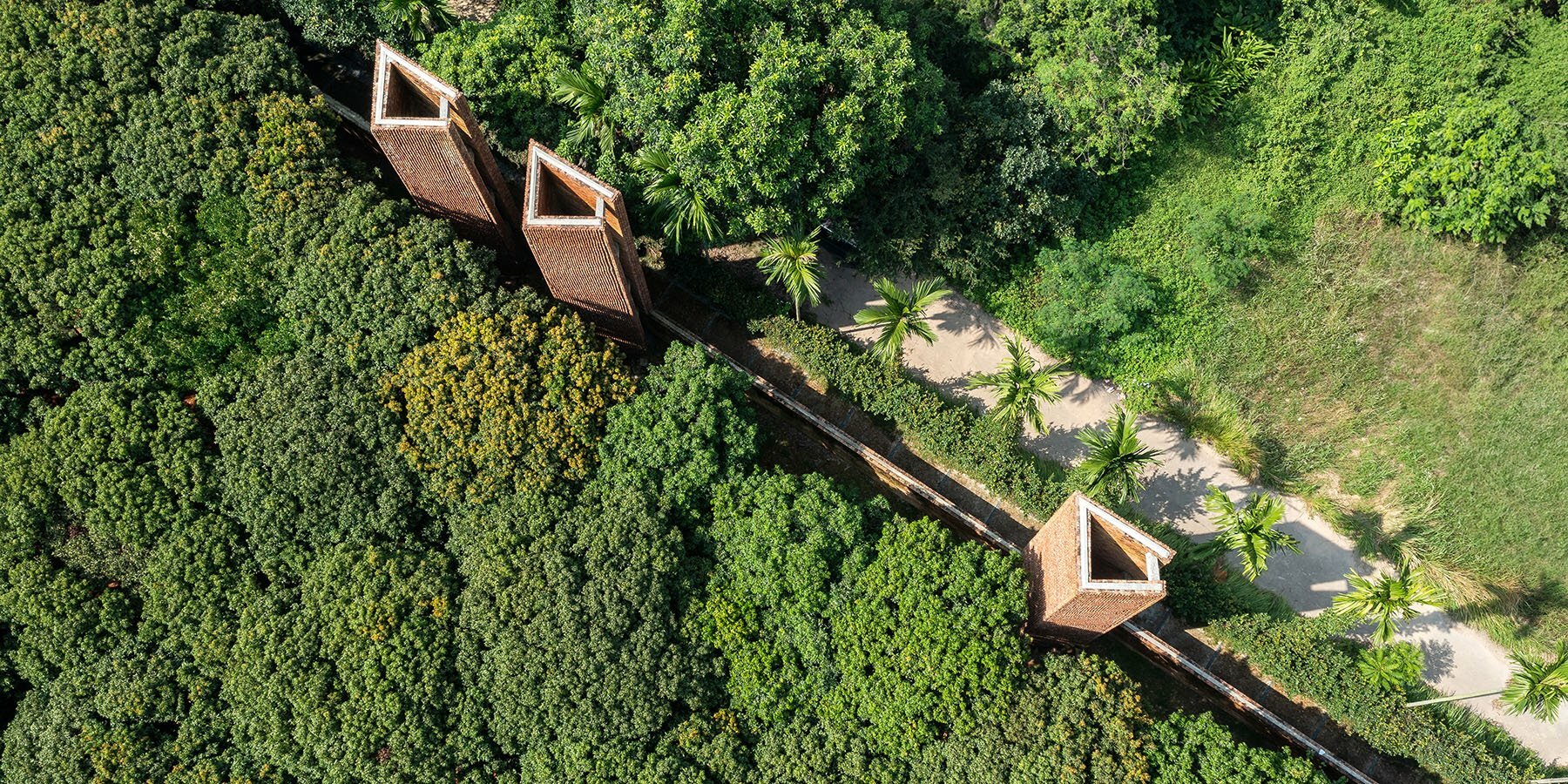
image courtesy of ARB Architects
ARB Architects crafts Vietnamese Đạo Mẫu Museum, a cultural project driven by the vision of Artist Xuan Hinh, a renowned Vietnamese folk artist. Positioned in a village near Hanoi, the museum spans 5,000 sqm amidst a 50-year-old orchard, preserving the existing landscape, including pine and bonsai trees, an existing small house, and original gate pillars. The design integrates new functional blocks for accommodation, galleries, and a kitchen around the old house, which now serves as an artifact display area.
Traditional clay tiles collected from historic houses in nearby areas dominate the museum’s material palette, symbolizing a commitment to preserving architectural heritage amid ongoing urbanization. The use of these tiles is rooted in the artist’s memories of votive dance ceremonies and the sacred atmosphere created by the smoke of incense that penetrates through the tiled roofs of the temples.
read more here
WINDING TIMBER LOOKOUT TOWER RISES ABOVE BUDAPEST NATURE RESERVE FOR 360-DEGREE VISTAS
Robert Gutowski Architects plants the winding Lookout Tower to mark the nature reserve of Budapest and the Naplás Lake and stand as a sculptural beacon for hikers. With a unique geometry, the timber structure is simple yet playfully sophisticated, presenting an open-worked sculptural mass that emerges from the natural environment and gently twists up towards the sky. Visitors are invited to explore its intricate wooden form, climbing up the tower to enjoy 360 degree vistas of the engulfing landscape through the slats and the culminating panorama deck at the peak.
read more here
PAUL LE QUERNEC BUILDS COCOON-SHAPED LIVING UNITS FOR NEW NURSERY IN FRANCE
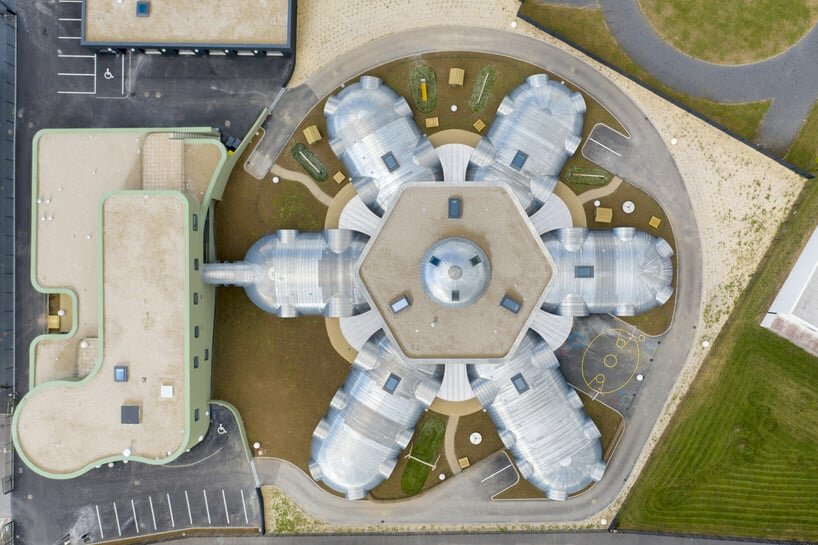
image courtesy of Paul Le Quernec Architectes
Since 1985, the nursery managed by the Maison Départementale de l’Enfance et de la Famille du Calvados (MDEFC) in Caen, France, has been welcoming children, aged 0 to 6 years old, coming from disadvantaged or abusive homes. This temporary placement protects and supports these children dealing with complex, traumatic situations before offering them a lasting solution adapted to their specific needs. Wanting to relocate its premises to a new site, the MDFEC invited Paul Le Quernec Architectes for a consultation back in 2017 to envision a new nursery in Fleury-sur-Orne, just outside Caen.
The resulting design emerges as a village-like complex with cocoon-shaped living units that link to two other buildings. Specifically, the 2,650 sqm site was organized into three structures: a technical building containing various workshops; a logistical building holding administrative departments, medical and parental reception, and laundry and dining services; a building grouping the children’s living areas.
read more here
WOODEN SHINGLES OVERLAY CLUSTER OF MONOLITHIC CABINS ON CHINESE WATERFRONT
Located in the Fragrant Lake of Huanggang City in China, the Sprite Cabin is one part of the ‘wild’ getaway homes building plan by architectural practice Wiki World. Adjacent to the Inner Lake Peninsula, the construction puts up two clusters of crystal-like formations surrounded by a bamboo forest. The two geometric structures shape three peaked volumes each covering them in wooden shingles.
The three hexagonal plans of each cabin distribute a bedroom, a living area, and a bathroom respectively. The cutting edges of the wooden lodges frame sharp triangular openings toward the riverscape. The construction applies laminated wood, while each irregular component and node is designed and customized through digital technology, achieving full assembly on-site. The outer facade composes a fish-skin-like shell while the inner surfaces of the volumes put up reflective aluminum plates mirroring the enclosing plantation. The two seemingly conflicting materials complement each other merging the cabin with the landscape.
read more here
see designboom’s TOP 10 stories archive:
